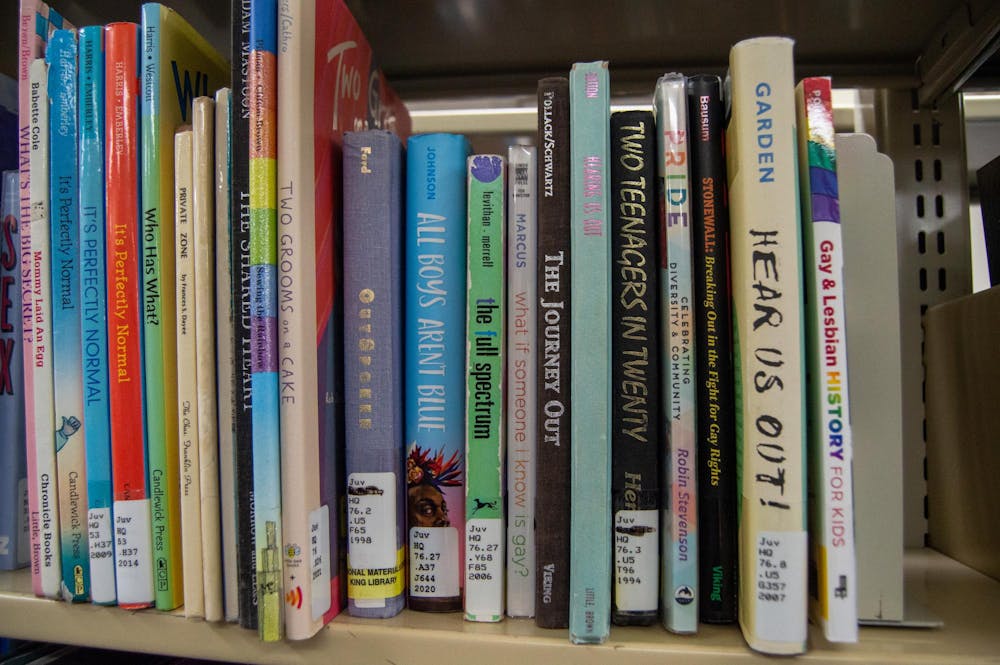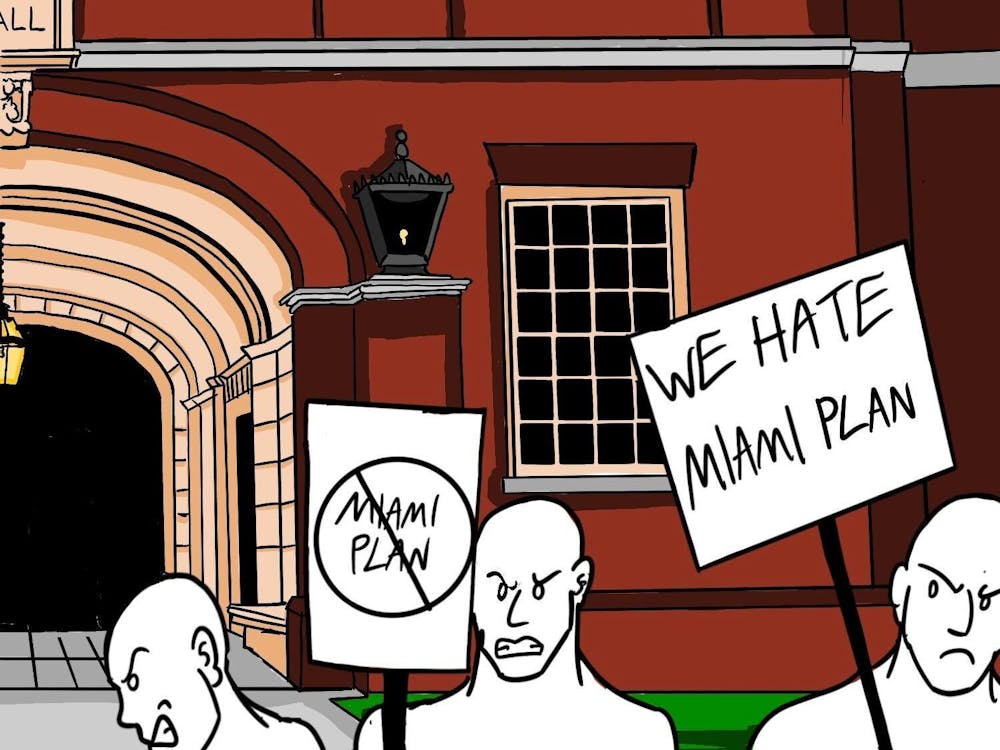A shortened version of this column was published in the Nov. 21 print edition of The Miami Student
Children in America grow up watching Disney cartoons. According to a study published in “Child Development,” 96% of girls and 87% of boys have seen Disney Princess media. In these movies, children watch a woman fall in love with a beast, a woman kissing a frog and an unconscious woman being kissed without her consent.
None of these stories provoke the same outrage as two boys consensually kissing in a graphic novel.
During the public comment section of the Talawanda Board of Education meeting on Oct. 9, two parents, Katie Benge and Ashley Ledington, spoke about their concerns over the book “Drama” by Raina Telgemeier being included in elementary school classrooms. They said the book included sexually-explicit content that was inappropriate for elementary students to be exposed to. The content in question included mentions of same-sex attraction and a drawing of two boys kissing.
LGBTQ+ themes are not inherently sexual. Yes, sexual attraction is part of an LGBTQ+ identity, but so is romantic love and physical affection other than sex. It is not considered obscene for heterosexual couples to kiss in front of children? Why is it any different for homosexual couples?
LGBTQ+ people want the same experiences and rights that are afforded to straight people, including the ability to love in public.
I read “Drama” when I was a kid, before I realized I was queer. I grew up in a conservative, religious environment. When I discovered I was queer, exposure to LGBTQ+ media, including “Drama,” was what helped me realize my identity was not shameful.
Seeing LGBTQ+ themes presented in a neutral light — as something normal to experience, not something that should be hidden or repressed — was a lifeline for me. It allowed me to understand my identity and realize I was not alone in this experience.
“Drama” is entirely appropriate for elementary school children. It contains nothing more sexual than what children are exposed to in other popular pieces of media.
Teaching children from an early age about the concept of same-sex attraction is important for two reasons: students who later identify as LGBTQ+ will understand their identity and feel less alone, and students who are not LGBTQ+ will be able to empathize with their peers who are.
Elementary school students shouldn’t be reading anything graphically sexual, but books where two boys date or someone has two moms are an age-appropriate exposure to the fact that queer relationships exist.
According to a study published in the Journal of Applied Developmental Psychology, the mean age for children to realize they are experiencing same-sex attraction is 11 years old, with the 25th percentile of subjects realizing it at age 7.
Enjoy what you're reading?
Signup for our newsletter
One study from the National Institute of Health indicated that exposure to transgender identities in media could lead people to be more accepting of those identities, and another study found that any increase in social acceptance of their identity led to a decrease in suicide attempts among LGBTQ+ youth.
We should be less concerned about whether their children will learn about LGBTQ+ subjects — they will learn about it sooner or later, from their friends, the internet or their own feelings. Instead, we should focus more on how children react when learning about homosexuality.
Will they show compassion for a gay friend? If a child discovers they are gay, will they be able to show compassion to themselves?
Another recent scandal for the Talawanda School District has been the posting of rainbow stickers by the door to several teachers’ rooms. Recently, as reported by the Oxford Free Press, former school board candidate Tom Heisler was taking photos of those stickers.
In a statement to the Free Press, he said, “My platform is built upon transparency: fiscal and otherwise. The rainbow stickers with the web address of http://www.Glsen.org being displayed on some classrooms are from an organization that, for the most part promote links to political ideology and lesson plan suggestions that are not found within curriculum guidelines.
“I was therefore following up on concerns about politicization in the schools and took pictures when the school was open to the public. The pictures did not include the names or likenesses of any students. I did not access any restricted areas nor violate any laws.
“I share parental concern about promoting some areas of the school as safe and implying other areas are not as safe. The 2024/25 bullying report published by the board indicates there is not a bullying issue within any of the TSD buildings.
“I am aware that Oxford Free Press has been funded in part by the Talawanda School Board, raising concern that OFP obtained an alleged document before being received by myself. This brings concern that a connection between the two parties implies intent for political slander.
“This is my full and complete statement to your request. Any partial dissemination or manipulation of this statement will be considered political in nature and dealt with accordingly.”
I graduated from Talawanda High School in 2024, so I remember seeing some of these rainbow stickers. I never viewed spaces without them as unsafe, but I was definitely more open about my queer identity where they were present. The absence of a sticker does not imply a space is unsafe, but its presence can reaffirm to an LGBTQ+ student that they are welcome to express themselves freely.
I witnessed plenty of homophobia at Talawanda, from people using gay as an insult and being called slurs, to having peers write openly-homophobic papers in English class. In this environment, it is important to remind LGBTQ+ students that there are people who support them.
Heisler also noted that the rainbow stickers included links to GLSEN, which he claimed is “an organization that, for the most part, promotes links to political ideology and lesson plan suggestions that are not found within curriculum guidelines.”
As reported by the Free Press, “some of the stickers on the name plates do have links to the GLSEN website, other stickers are just rainbows.”
According to the GLSEN website, their mission is “... to ensure that every member of every school community is valued and respected regardless of sexual orientation, gender identity or gender expression.”
An LGBTQ-inclusive education is vital for ensuring that queer kids can have a healthy, supportive childhood. The purpose of GLSEN is not to indoctrinate kids; it’s to create more empathetic children who can understand LGBTQ+ identities in themselves or others.
In a time of increasing panic over LGBTQ+ identities, it is imperative that schools continue to remind LGBTQ+ students that they are welcome there, whether through the books they are allowed to read or the wall decor in the classrooms in which they learn. For some students, this support may literally be the difference between life and death.
Eliza Sullivan is a sophomore double majoring in diplomacy and global politics and Russian, Eastern European and Eurasian studies. She writes for the opinion section of The Miami Student, and she is also involved with Model Arab League and Miami University College Democrats.




